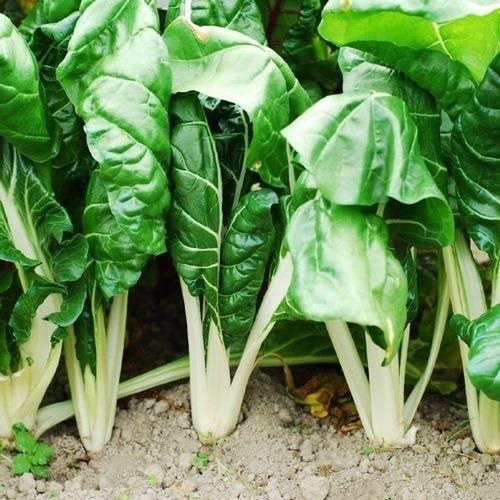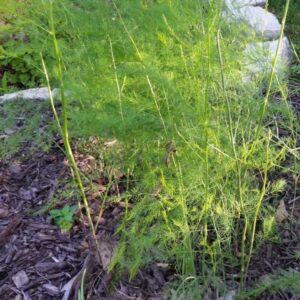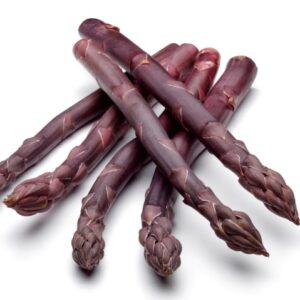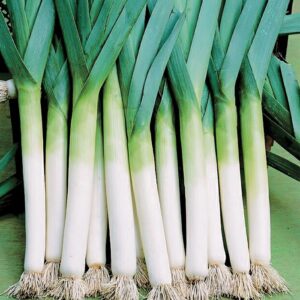Fordhook Giant Swiss Chard
Description
Fordhook Giant Swiss chard is a variety known for its large, dark green leaves and thick, crisp
stalks. Here’s a description:
– **Appearance**: Fordhook Giant Swiss chard typically grows large, glossy, dark green leaves that can reach up to 2 feet in length. The stalks are thick and sturdy, ranging in color from white to pale yellow or red, depending on the variety.
– **Flavor**: This variety of Swiss chard has a mild, slightly earthy flavor with a hint of sweetness. The leaves are tender and can be eaten raw or cooked, while the stalks have a crunchy texture when cooked.
– **Nutritional Benefits**: Like other varieties of Swiss chard, Fordhook Giant is rich in vitamins,
minerals, and antioxidants. It’s particularly high in vitamins A, C, and K, as well as potassium, magnesium, and iron. It’s also low in calories and carbohydrates, making it a nutritious addition to any diet.
– **Versatility**: Fordhook Giant Swiss chard is incredibly versatile in the kitchen and can be used in a variety of dishes. The leaves can be chopped and sautéed, steamed, boiled, or added raw to salads. The stalks can be cooked separately or alongside the leaves and used in stir-fries, soups, or gratins.
– **Growth Habit**: Fordhook Giant Swiss chard is a biennial plant that is typically grown as an annual. It’s easy to grow and can tolerate a wide range of growing conditions, making it suitable for gardeners of all skill levels.
Overall, Fordhook Giant Swiss chard is prized for its large, flavorful leaves, crisp stalks, and nutritional benefits, making it a popular choice for both home gardeners and professional chefs.
Planting instructions:
To plant Fordhook Giant Swiss chard:
1. **Choose the Right Location**: Select a sunny or partially shaded spot in your garden with well-draining soil. Swiss chard can tolerate a range of soil types but prefers slightly acidic to neutral soil.
2. **Timing**: Swiss chard is a cool-season crop, so plant seeds in early spring for a spring harvest or in late summer for a fall harvest. It can also be grown in mild winter climates.
3. **Prepare the Soil**: Work the soil to a depth of about 6-8 inches and incorporate organic matter like compost or aged manure to improve soil fertility and structure.
4. **Planting Seeds**: Sow the seeds directly into the prepared soil, spacing them about 1 inch apart and covering them with a thin layer of soil. If planting rows, space rows about 12-18 inches apart.
5. **Watering**: Keep the soil consistently moist but not waterlogged. Water the seeds or seedlings regularly, especially during dry periods, to encourage germination and healthy growth.
6. **Thinning**: Once the seedlings emerge, thin them to a spacing of 6-8 inches apart to allow room for the plants to mature and develop large leaves.
7. **Mulching**: Apply a layer of mulch around the plants to help retain moisture, suppress weeds, and regulate soil temperature. Mulching also helps protect the shallow roots of Swiss chard.
8. **Fertilizing**: Swiss chard is not heavy feeder, but you can apply a balanced fertilizer or compost around the plants every 4-6 weeks to promote healthy growth and productivity.
9. **Harvesting**: You can begin harvesting the outer leaves of Fordhook Giant Swiss chard when they reach 6-8 inches in length. Harvest by cutting the leaves at the base of the plant, leaving the inner leaves to continue growing. Regular harvesting encourages continued production throughout the growing season.
10. **Pest and Disease Control**: Monitor the plants regularly for signs of pests, such as aphids or leaf miners, and diseases like downy mildew. Control pests and diseases promptly using organic methods, such as handpicking, spraying with insecticidal soap, or applying neem oil.
By following these planting instructions, you can successfully grow Fordhook Giant Swiss chard and enjoy a bountiful harvest of nutritious and delicious greens throughout the growing season.





